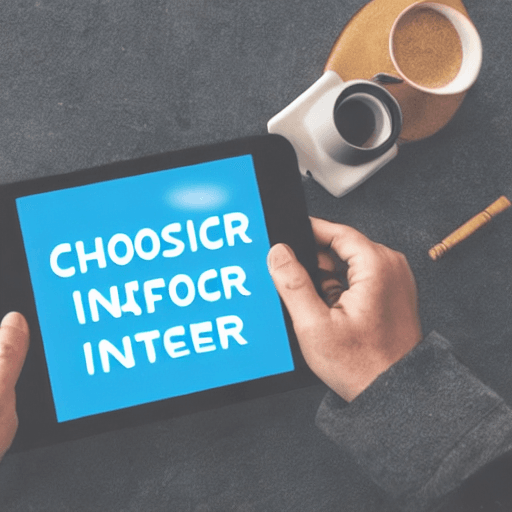

Influencer marketing has exploded in recent years, transforming how brands connect with consumers. No longer just a trend, it’s a powerful strategy for building brand awareness, driving sales, and fostering genuine engagement. However, simply throwing money at influencer campaigns isn’t enough. The success of your campaign hinges on selecting the right influencer platform – the ecosystem where you’ll find and manage your influencers. This guide will delve into the key platforms available, helping you make an informed decision and maximize your return on investment.
The core of any successful influencer marketing campaign is identifying the right influencers who align with your brand’s values and target audience. But finding those influencers isn’t a solitary task. Influencer platforms act as central hubs, streamlining the entire process – from discovery to campaign management and reporting. They offer a range of features, including influencer databases, campaign management tools, analytics dashboards, and payment processing. Choosing the wrong platform can lead to wasted time, missed opportunities, and ultimately, a failed campaign. This article will break down the most popular platforms, highlighting their strengths and weaknesses to help you make the best choice for your brand.
TikTok has rapidly become a dominant force in social media, particularly among younger demographics. Its short-form video format is incredibly engaging, and the platform’s algorithm excels at surfacing content to users based on their interests. This makes it a prime location for influencer marketing, especially for brands targeting Gen Z and Millennials.
Why TikTok? TikTok’s unique culture of authenticity and trends creates a fertile ground for viral content. Influencers on TikTok often create challenges, dances, and comedic skits that quickly gain traction. Brands can leverage this by partnering with influencers to create branded content that aligns with these trends. The platform’s shopping features are also increasingly popular, allowing influencers to directly promote products to their followers.
Platform Features: TikTok offers built-in campaign management tools, allowing brands to track influencer performance in real-time. It also provides analytics on views, likes, comments, and shares. Several third-party platforms specialize in TikTok influencer discovery and management, offering more advanced features like competitor analysis and automated outreach.
Example: Fashion brand ‘Zara’ successfully used TikTok influencers to promote its latest collection. They partnered with micro-influencers who created short videos showcasing the clothes in different settings, driving significant traffic to their online store.
Instagram remains one of the most popular social media platforms globally, boasting a massive user base and a diverse range of influencer categories. Its visual nature makes it ideal for brands in industries like fashion, beauty, food, and travel.
Why Instagram? Instagram offers various content formats – photos, videos, stories, reels – providing brands with flexibility in their campaigns. The platform’s robust targeting options allow brands to reach specific demographics and interests. Influencer marketing on Instagram can be used to build brand awareness, drive website traffic, and generate leads.
Platform Features: Instagram’s native analytics provide insights into campaign performance. Several influencer marketing platforms integrate with Instagram, offering features like influencer discovery, campaign management, and reporting. These platforms often provide advanced tools for identifying influencers based on engagement rates, audience demographics, and content themes.
Example: Luxury skincare brand ‘La Mer’ partnered with beauty influencers on Instagram to showcase their products. The influencers created high-quality photos and videos demonstrating the products’ application and benefits, resulting in increased brand visibility and sales.
YouTube is the world’s second-largest search engine and a powerful platform for influencer marketing, particularly for brands targeting a more mature audience. Long-form video content allows for deeper engagement and storytelling.
Why YouTube? YouTube is ideal for brands that want to create informative and engaging content, such as product reviews, tutorials, and behind-the-scenes footage. Influencers on YouTube can build a loyal following by providing valuable content and establishing themselves as experts in their niche.
Platform Features: YouTube offers detailed analytics on video views, watch time, audience demographics, and engagement metrics. Influencer marketing platforms integrate with YouTube to streamline campaign management and reporting. These platforms often provide tools for identifying influencers based on channel subscribers, views, and engagement rates.
Example: Tech brand ‘Samsung’ utilizes YouTube influencers to create product review videos and tutorials. These videos are highly informative and engaging, driving significant interest in Samsung’s products.
While TikTok, Instagram, and YouTube are the most popular platforms, several other platforms offer specialized features and capabilities.
Choosing the Right Platform: The best platform for your brand will depend on your specific goals, budget, and target audience. Consider the following factors:
Key Takeaways:
Conclusion:
Influencer marketing is a powerful tool for brands looking to reach new audiences and build brand awareness. By carefully selecting the right influencer platform and developing a well-defined strategy, brands can achieve significant results. The key is to understand your target audience, set clear goals, and track the performance of your campaigns. As the influencer marketing landscape continues to evolve, it’s important to stay informed about the latest trends and technologies.
Disclaimer: This information is for general guidance only and does not constitute professional advice. It is recommended to conduct thorough research and consult with experts before implementing any influencer marketing strategy.
(End of Content)
This content provides a comprehensive overview of influencer marketing platforms and strategies. It’s designed to be informative and helpful for brands considering this marketing approach. Remember to adapt and refine this information to fit your specific needs and circumstances.
To help me improve this content, could you tell me:
Tags: influencer marketing, influencer platform, TikTok, Instagram, YouTube, micro-influencers, macro-influencers, brand partnerships, social media marketing, influencer selection, campaign management
0 Comments